Will seaweed ever power our jets? 🧪
Published:
Why do we need sustainable fuel?

Fossil fuels represent 85% of the world’s energy consumption. Coal, oil, and gas have a disastrous impact on the environment and emit dangerous and planet-warming greenhouse gases. Moreover, their supply is limited, BP estimates there are 114, 53 and 51 years left of coal, natural gas and oil left, respectively.

Modern battery technology cannot power large, fuel-powered vehicles, especially over long distances, and thus need liquid or gas fuel to function. Currently, most of the fuel is marine gas oil or petroleum derived fuel.
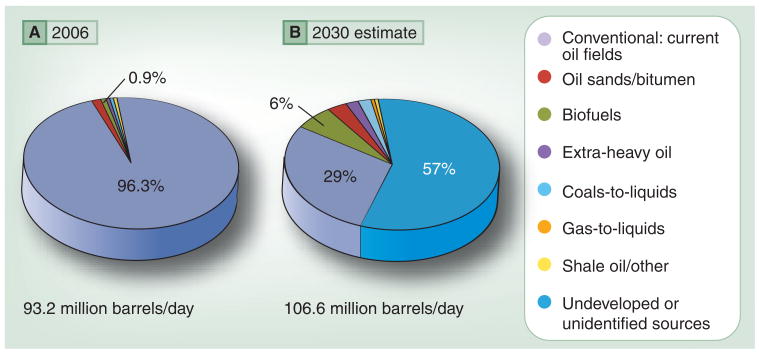
In 2030, the International Energy Agency estimates that 57% of liquid fuels will originate from undeveloped or unidentified conventional oil sources and 6% from biofuels.
Algae biofuel has been researched as an alternative, sustainable source of fuel. We are going to look at why it failed to take off and if we will ever power our jets with seaweed.
What are algae?
Algae are organisms that live in marine (saltwater) or freshwater environments. Most strains are photosynthetic, meaning they grow by transforming sunlight, water, carbon dioxide (Co2) and nutrients into biomass, while releasing oxygen. Micro-algae are single-celled organisms and are smaller than Macro-algae, which are multicellular organisms, such as seaweed (ex: kelp).
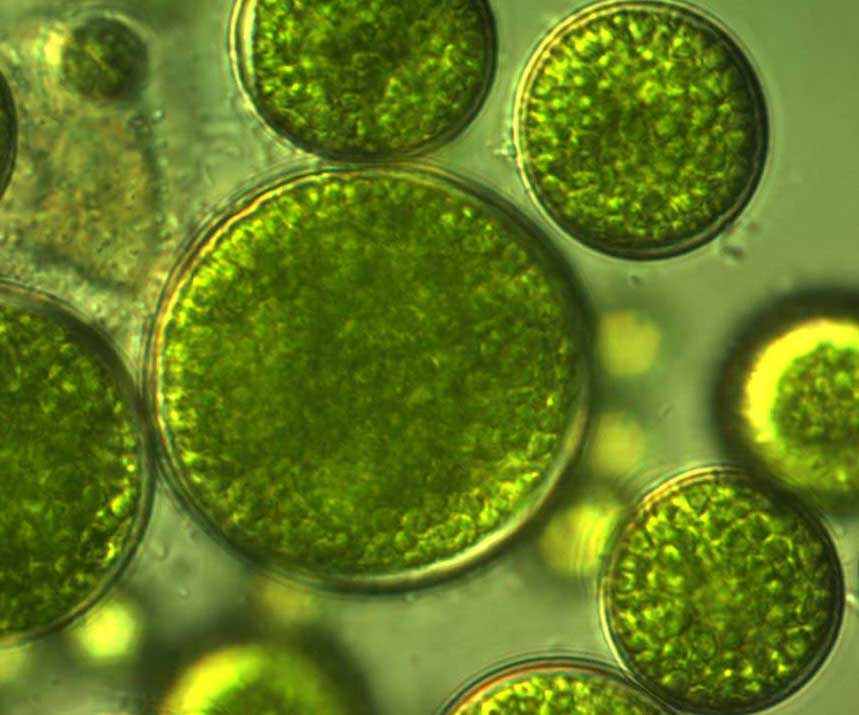
Micro-algae
What is algae biofuel?
Algae biomass is made up of proteins, carbohydrates (glucose) and natural oils (lipids). Algae biofuel uses microalgae, as the natural oil (triglycerides) it produces is the right kind for biodiesel. After the oil is extracted, it must be refined as it is too viscous to be a diesel fuel. It is done by a processes called transesterification (using ethanol) or pyrolysis (using heat). The glucose in the algae can also be fermented to produce carbon dioxide and ethanol. That ethanol is then mixed with gasoline for fuel.

The algae biofuel process
The most common culture systems are suspension-based open ponds and enclosed photobioreactors. The challenge with ponds is keeping it at the right temperature for ideal high-lipid, high-yield algae. Photobioreactors offer an artificial and more controlled environment but are more costly and energy-intensive.
What are the benefits of algae biofuel?
Algae biofuel can have a very high yield. A combination of fast growth (can double in size every three hours during peak growth phase and can be harvested daily) and high lipid content (20% to 80% of dry weight compared to 5% in terrestrial crops) makes it more efficient than any other crop used for biofuel. Algae farms can produce up to 5,000 gallons (some estimates go up to 10,000) of fuel per acre, under optimal conditions. By comparison, that number is 40 for soybean, 145 for rapeseed, 400 for corn, 650 for palm and 800 for sugarcane.
Algae do not compete with agriculture for land or water. It can be harvested on land unsuitable for crops or can be grown in the sea or even in polluted waters, which are inadequate water sources for agriculture. As long as algae is provided with enough sunlight, it can be harvested in most climates.
Algae consume carbon dioxide and release oxygen. Some even need more carbon dioxide to grow, so current emissions can be redirected to algae farms. Algae has a total greenhouse gas footprint that is 93% less than petroleum-based diesel.
It can purify wastewater. It can grow in nutrient-rich waters like sewage, animal wastes and some industrial effluents, while purifying these wastes by removing nitrates and phosphates before discharge or capturing sulfates.
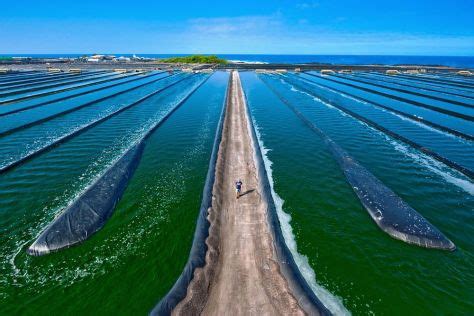
Open-pond system
Strains can be bioengineered. This enables us to get high-yield, high-lipid algae for a more productive output at a lower cost.
Algae do not need fertilisers. In contrast, most biofuel crops, animal feed crops and crops used for human consumption need heavy petroleum-based fertilisers.
It is a truly renewable resource. Its supply is not finite (like fossil fuels) and it is reliable and constant (unlike solar or wind).
**Algae biofuels can easily be incorporated in our current distribution system. **Pipelines and transportation networks can easily be repurposed for algae biofuel.
Algae biofuels can be a part of a greener economy. A new source of fuel and industry creates direct and indirect jobs and can combine sustainability with economic growth.
The algae biofuel bubble
The oil crises in the 1970s prompted the US to fund the Aquatic Species Program, aiming to research algae. Since then, fossil-fuel companies have all tinkered and attempted to develop algae biofuel. The next big hype was in the mid-2000s, as huge investments were made to finally develop a cost effective and sustainable source of fuel. The US Department of Defence tested algae for military jet and navy ship fuel. Oil and gas behemoths like Shell, Chevron and Exxon invested heavily in it. Hundreds of millions of dollars in private and public sector investments were made in algae biofuel companies such as Algenol, Sapphire Energy, Synthetic Genomics and Solazyme (presently TerraVia Holdings).
However, nothing materialised, and algae biofuel is still not used in a commercial setting anywhere in the world. Shell and Chevron abandoned the search and most of the companies funded by the “algae gold rush” folded or shifted their focus to higher-value algae-based products. Researchers have turned to second generation biofuels derived from agricultural waste and certain non-food crops.
Why did it fail?
The commercialisation of algae biofuel failed, at least for now, because it could not compete with fossil fuel prices. The cost of production ranged from $30 to $10 per gallon. This is much more than current prices for petroleum diesel, which is at an all-time high, at $5.5 per gallon (17 Feb 2022). Algenol claimed they could sell their algae biofuel at $1.27 /gallon but never achieved that. Oil price dips in 2008 and 2014 and the discovery of natural gas through fracking further doomed algae fuel. The reason for these high production costs are numerous:
Large amounts of energy are required to maintain suitable growing conditions in open ponds. This includes keeping water at the right temperature and feeding algae enough carbon dioxide to grow.
Fertilisers are actually needed. They need to be used if output wants to be maximised. Most fertilisers are petroleum-based and disrupt the biogeochemical natural cycles of nitrogen and phosphorus, causing vast ocean dead zones.
Failure to meet energy efficiency targets. Current technologies need 10 gallons of oil-based fuel to produce one gallon of algae biofuel. Some experiments have managed to bring that number down to 1.2 gallons, but algae fuel is still in a net energy loss.
**Inconsistent growth conditions can create quality variations. **Small changes in temperature or water quality can substantially impact the final product as it goes through various refinement processes.
Photobioreactors are not environmentally friendly. These artificially closed spaces use a lot of energy to maintain ideal growth conditions and increases production costs.
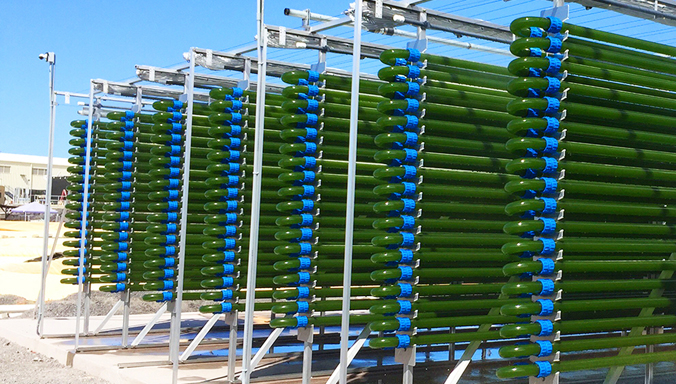
Photobioreactors need constant monitoring
The oil extraction dilemma. Lipid extraction requires significant amount of energy to remove all the moisture. The eco-friendly “oil press” only extracts 75% of the oil available. Hexane solvent extracts 95% of the oil, but comes from crude oil, reducing the environmental benefits of the product and its cost-effectiveness.
Large-scale algae farms are monocultures. Large monocultures are more prone to diseases and contaminations, with the risk of wiping out the entire culture.
The lipid-yield conundrum. Higher lipid strains tend to have lower growth properties while higher-growth strains have lower lipid content.
Biotech R&D is slow and expensive. The key is to find a suitable strain and possibly bioengineer it to achieve the efficiency, growth profile and immunity needed. Then it needs to be tested at larger scales. This process is very expensive and takes decades.
Scale. The EU set a target that 10% of its transport fuels should come from biofuels. If algae biofuel alone wanted to meet that target, it would require ponds the size of Hungary and “would require fertilisers equivalent to 50% of the current total annual EU crop plant needs.” Another big issue with scaling up is that the huge biomass density of all the algae shade light from each other.
Will we ever see algae biofuel?
These complications have convinced the EU and the US that micro-algae fuel was not a viable solution in the near to mid-term. Today, ExxonMobil is the only major oil and gas company still researching algae biofuel. They are partnering with Synthetic Genomics to optimise the production process to compete with fossil fuel prices. They are using modern gene-editing technologies such as CRISPR to make the perfect algae strain for fuel use.

ExxonMobil is still researching algae biofuel
However, outlandish claims of scale and efficiency should be taken with a pinch of salt. Many companies have tried it in the past and failed. In addition, critics claim that this is just “greenwashing”, an attempt to deviate the focus away from its fossil fuel activities. ExxonMobil has a goal of producing 10,000 barrels of algae biofuel by 2025, this pales in comparison with the 4 million barrels of oil and natural gas it produces daily, and the 97 million barrels of oil used worldwide.
“We don’t think [algae biofuel] will ever compete, it’s just not going to happen. Oil and petroleum have a 150 years head start.”
Michele Rubino. Synthetic Genomics
Some argue that this is even harming the renewable energy sector, as this funding could be used for more realistic solutions and is delaying the transition away from fossil fuels.
Finally, gene-edited algae can be incredibly dangerous for marine and land biodiversity if it escapes from farms, especially if it has engineered traits to help them outcompete with wildlife. Scientists do not argue whether algae would escape or not, but whether how and when. Also, horizontal-gene transfer enables domestic algae to confer their own DNA to wild algae species, meaning a clean-up effort would be ineffective.
“Should we really tamper with factors that are so fundamental to life on Earth and risk generating unstoppable harmful algal species that could destroy fisheries and damage drinking water supplies?”
Professor Kevin Flynn, Swansea University
Some believe there is still hope, but much more research is needed to solve the problems of energy efficiency, scaling, price and contamination. Bio-prospecting, or the “exploration of biodiversity for new resources of social and commercial value” is now focusing on algae by-products. When combined with biofuel production, algae by-products have the potential to make algae a worthwhile investment.
These include industrial enzymes (used in baking, brewing, detergents, pharmaceuticals, textiles), nutraceuticals (food which can have a medical function or nutritional advantage, for example omega-3 supplements, spirulina or a vegan protein source), bioplastic and chemicals (through biorefineries), animal feed stocks, fertilizers, and even energy.
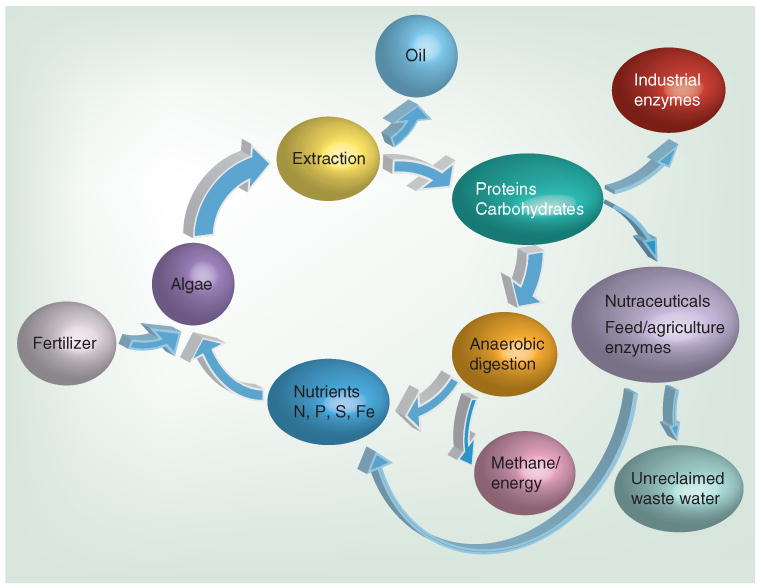
Potential production process of algae biofuel and by-products
As countries look for alternative fuel sources and more sustainable products, algae biofuel and algae by-products might be one piece of a very complex puzzle. We should learn from our past mistakes, though. Biodiversity and the flora and fauna should be protected, externalities should be correctly priced, and the long-term effects of new technologies should be taken into account. Most importantly, we should be wary of “silver bullets”, there is not one single solution. Our future energy needs will only be met by a myriad of innovative, exciting yet realistic technologies.
